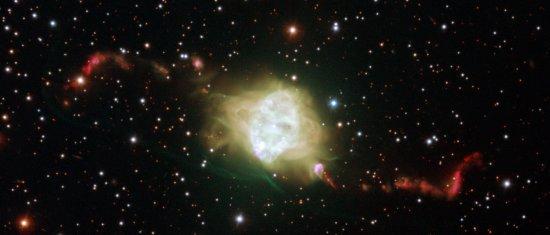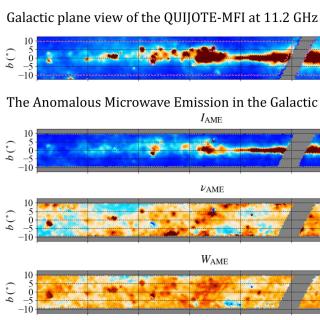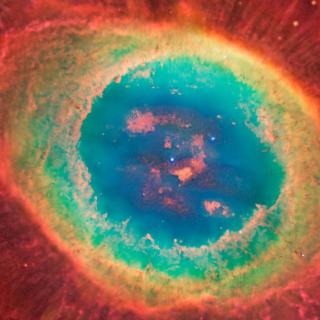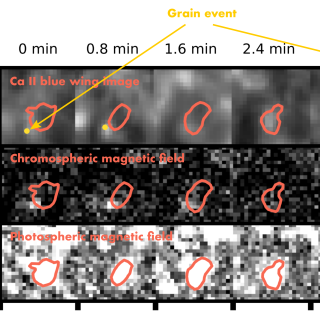Stars are generally spherical, yet their gaseous envelopes often
appear non-spherical when ejected near the end of their lives. This
quirk is most notable during the planetary nebula phase when these
envelopes become ionized. The most popular explanation is that the
asymmetry, and in particular the formation of highly collimated
structures such as the precessing jets observed in a number of
nebulae, is caused by interactions in a binary system. The study of
the prototypical planetary nebula Fleming 1 with the VLT telescope
demonstrates for the first time that the hypothesis is
correct. Indeed, it is found that the nucleus of Fleming 1 is composed
of two compact, evolved stars (white dwarfs) orbiting around each
other in a period of 1.2 days. Similar binary interactions are likely
to explain these kinds of collimated outflows in a large variety of
astronomical sources.
Advertised on
References
Science 2012, 9 November 2012



